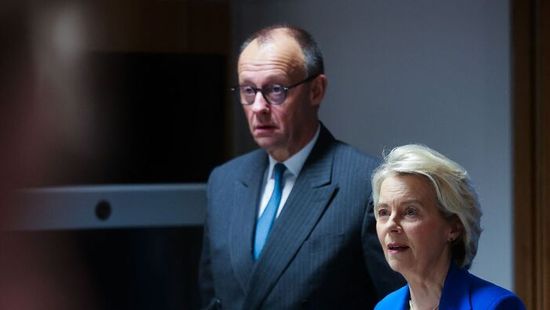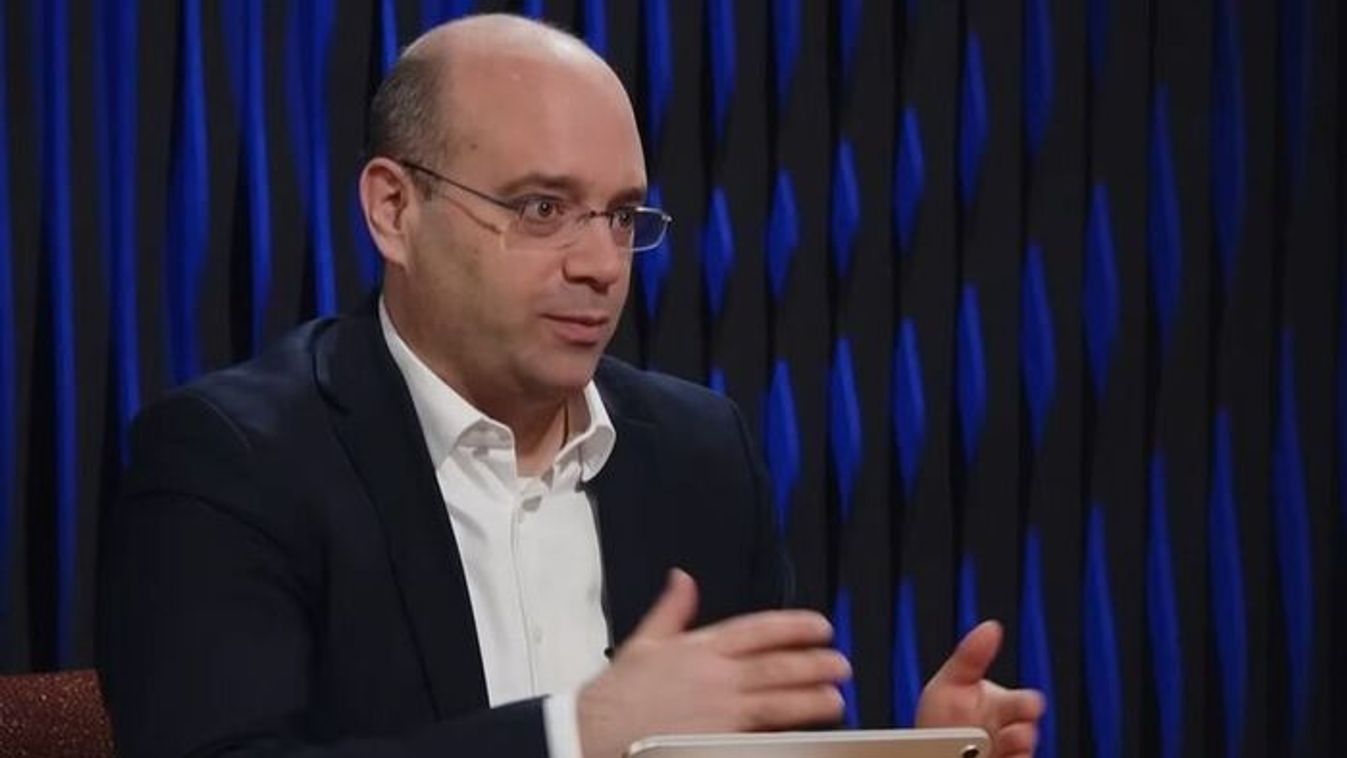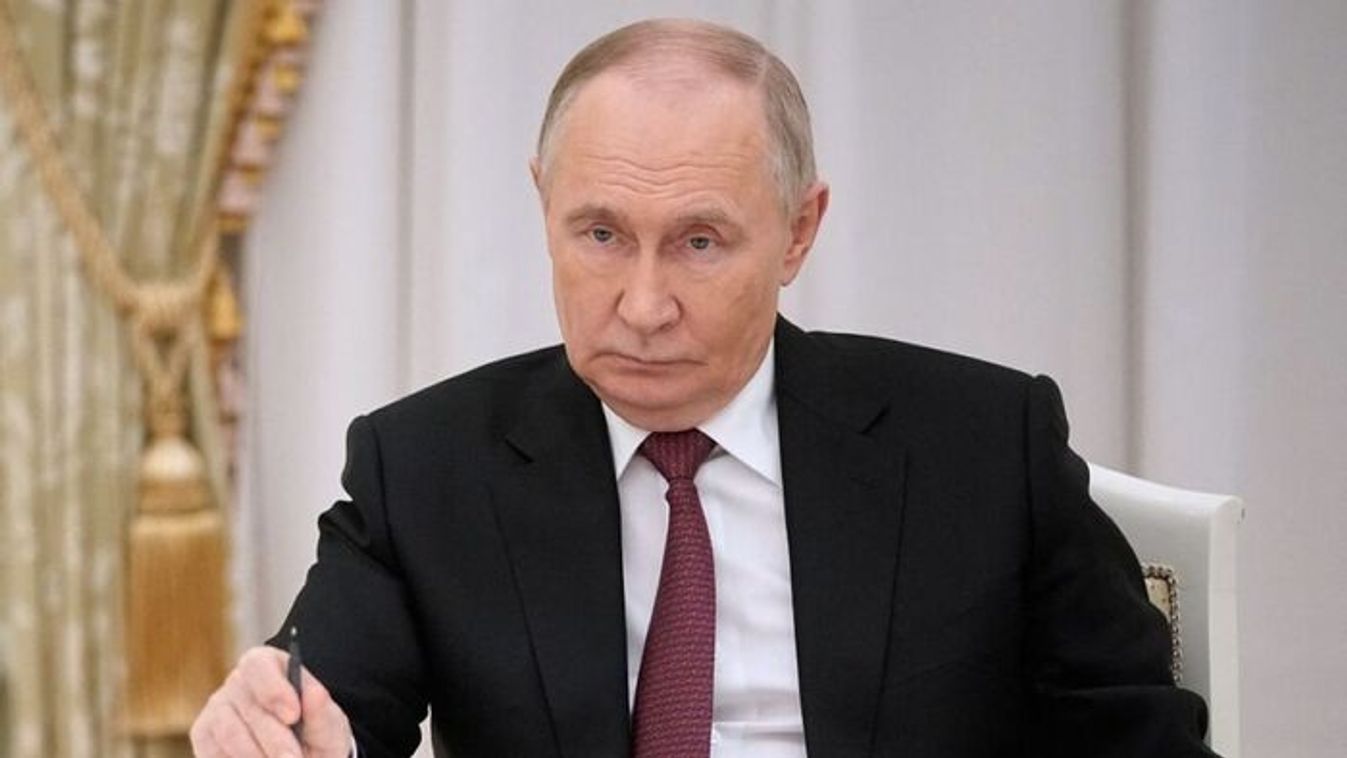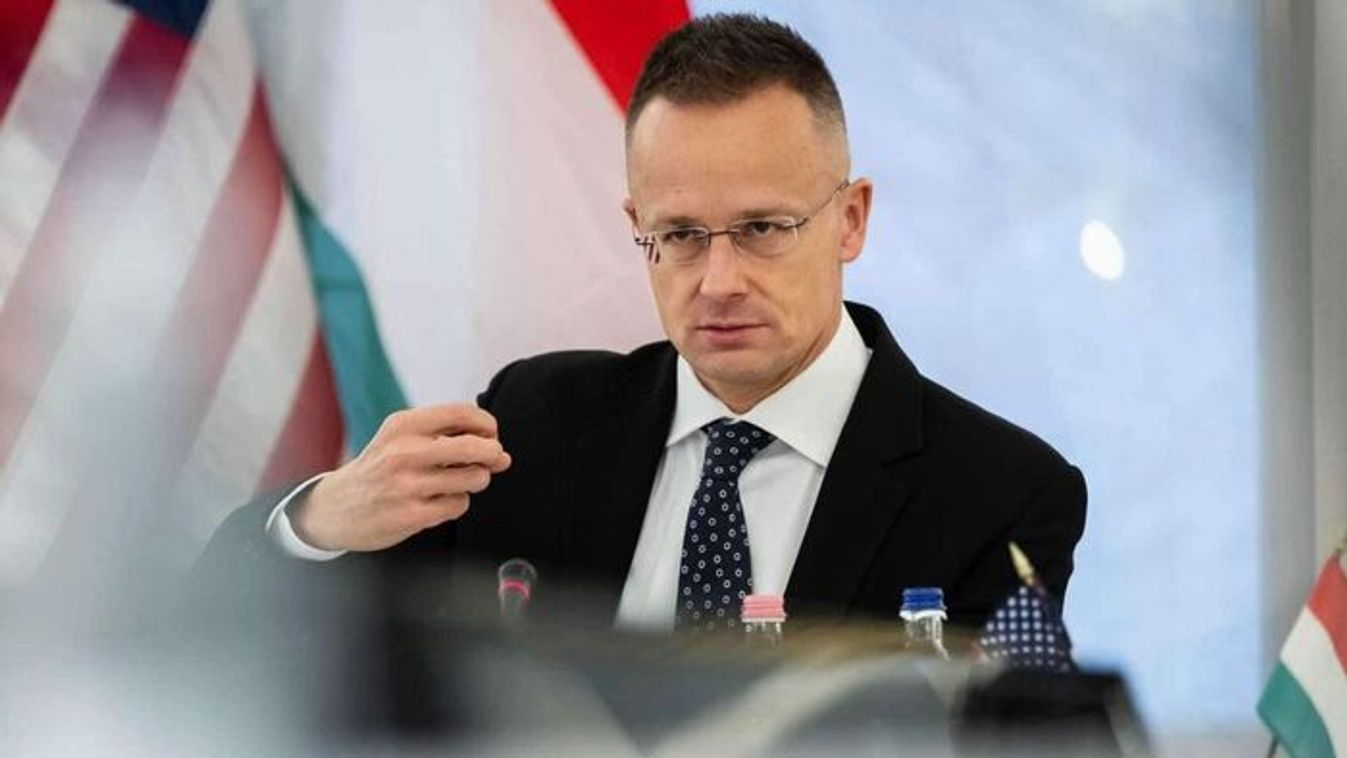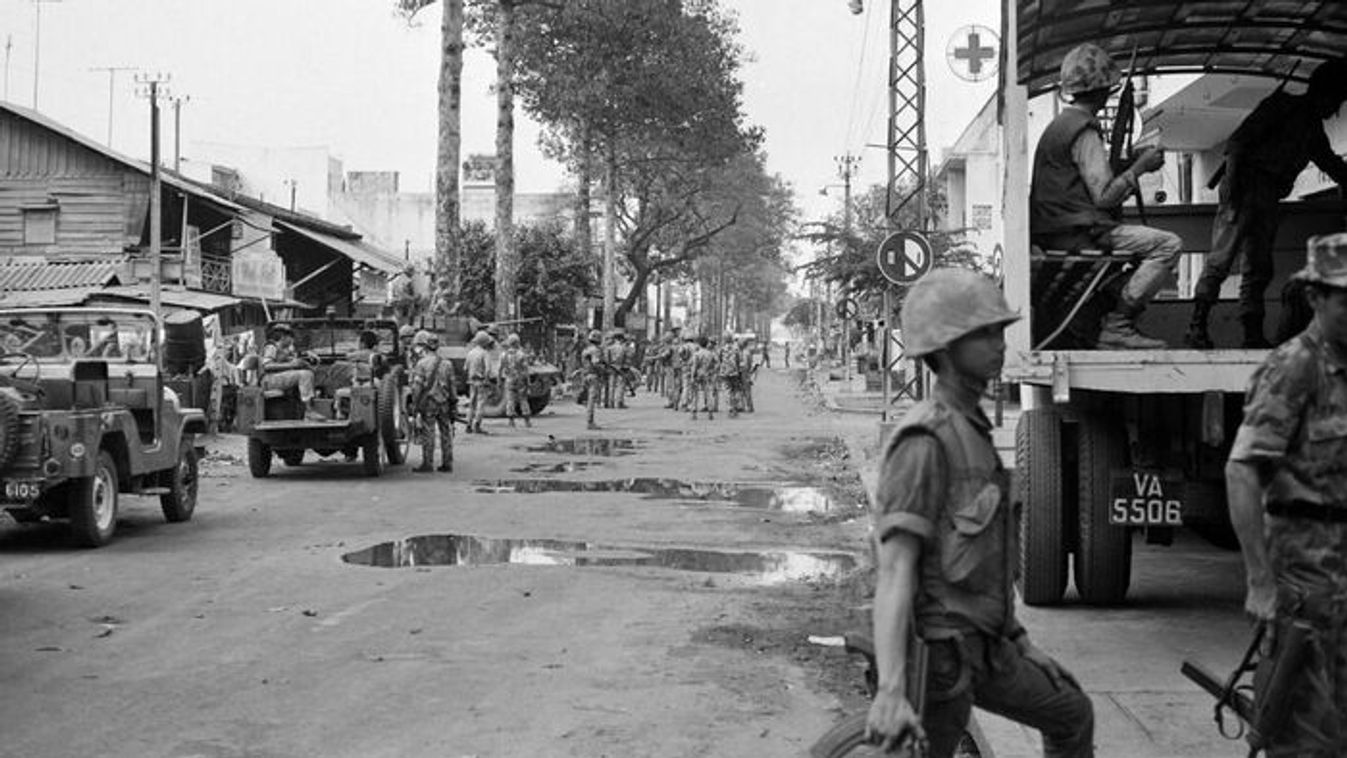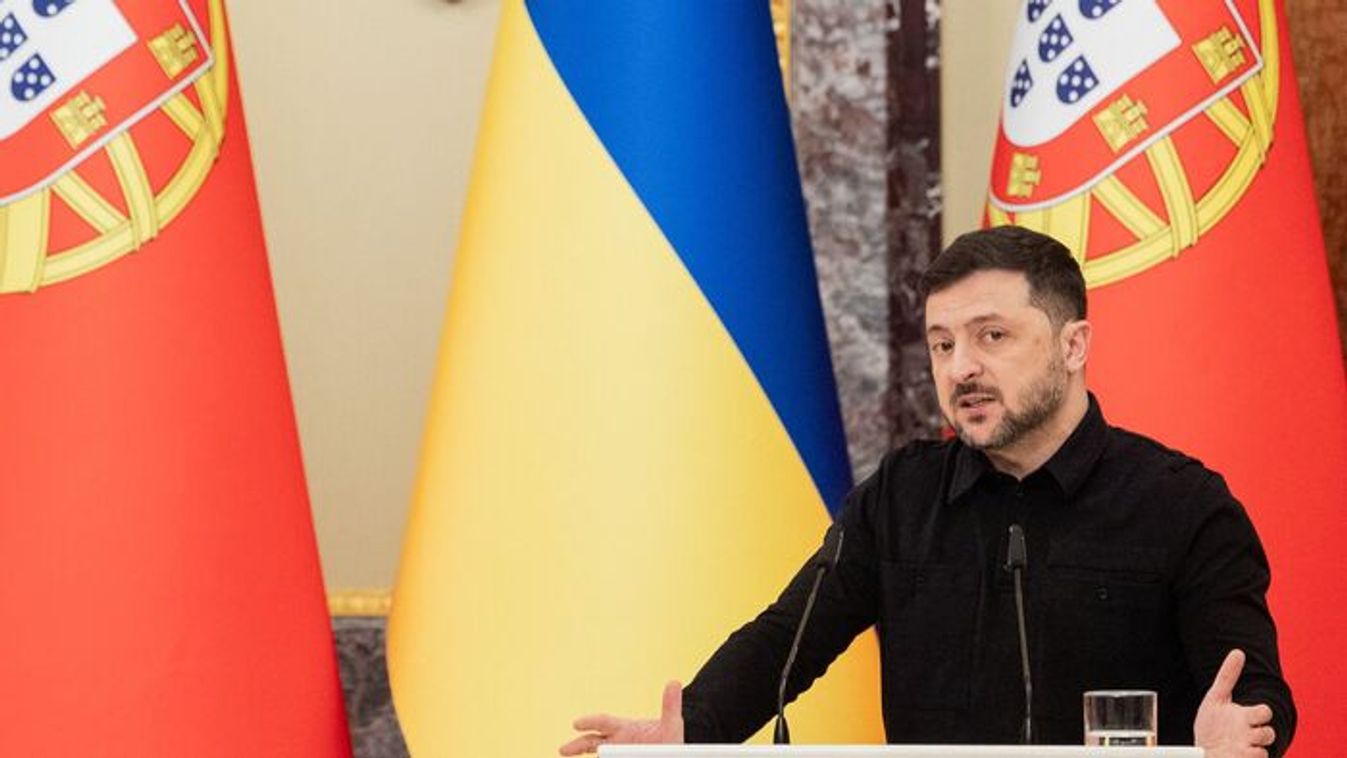Anti-Semites in the National Curriculum: Nyiro’s name and legacy became issues again in connection with a review and proposed revision of Hungary’s national public school curriculum that was initiated by the Fidesz government and is being carried out by the Ministry of National Resources. The government has proposed to include among the interwar authors whose works it is recommended teachers present to their students Jozsef Nyiro (novels), Albert Wass (children’s tales), and Deszo Szabo, among others. The guidelines in the National Curriculum provide no assistance to help teachers provide contextual information about these writers—including information about their political activities that might help teachers decide whether and how to teach about them. I have already discussed Nyiro. Let me introduce Deszo Szabo and Albert Wass, without attempting to evaluate the literary merits of their prose. Deszo Szabo wrote, “Jews are the most serious and the most deadly enemy of Hungarians. The Jewish question is a life and death question for Hungarians—a question that is linked to every aspect of Hungarian life and the Hungarian future” (“Antiszemitizmus,” Virradat [Dawn], Jan. 21, 1921); and two months later, after designating Judaism “a tribal superstition exalted as a religion,” concluded “In the interest of human progress, the barbarian, murderous memories of dark, primeval centuries [that is, the Jews—PAS] must be exterminated” (“1848 marcius 15,” Virradat, Mar. 16, 1921). Albert Wass, like Nyiro born in Transylvania, was convicted by the Romanian government of war crimes during his service in the Hungarian army, including complicity in the documented murder of two Jews and two Romanians in Hungarian-administered Transylvania during World War II. This did not prevent the incoming President of Hungary, Fidesz Deputy President Pal Schmitt from quoting Wass in his inaugural address in 2011.
In addition to the inclusion of problematic figures such as these, each of whom either fostered anti-Semitism or participated politically or militarily in regime-sponsored murder, the draft National Curriculum also stresses the country’s territorial losses after World War I as Hungary’s singular national tragedy, while suggesting equivalency with lesser significance between the Holocaust and Hungarian military losses on the Don River (Stalingrad) during World War II. Equating the loss of military forces to an enemy in battle with the systematic, racially inspired murder of civilian men, women and children who are citizens of one’s own country, solely because they are of different religion or ethnicity, of course makes no sense, unless motivated by prejudice and intended to reinforce prejudice.
Finally, while some information relating to Jewish history and the contributions of Jews to Hungarian intellectual, cultural, and economic life were included in the new National Curriculum approved at the end of 2012, the information fell short of the subject matter suggested by a consortium of Hungarian Jewish organizations. In a classic case of the government seeking to have it both ways, directing students’ attention to the likes of Nyiro, Szabo and Wass will likely undercut any positive effect of the new material reflecting positively on Jews, unless the latter is considerably expanded. Hungarian Jewish organizations have petitioned the government to remove these “anti-Semites” from the curriculum, but thus far the reply has been negative; indeed, it has been a more rigorous coordinated defense of the three “writers.”
The tactic of seeking to divert attention elsewhere to deflect criticism has been mobilized on the curriculum issue. Government spokespeople have responded to criticism from the United States, for example, by pointing out that Henry Ford, Charles Lindbergh, and Ezra Pound are included in American high school curricula, despite their demonstrable anti-Semitism. At this point, downplaying the significance of anti-Semitism as a factor to be considered, undermining understanding of the contributions of Hungarian Jewry to Hungarian national life, while trivializing and relativizing the significance of the Holocaust have been codified as elements of the Hungarian educational system that the Fidesz government has designed.
Rehabilitation of Holocaust Perpetrators: Hand in hand with attempts to whitewash Hungarian collaboration and complicity during the Holocaust, hand in hand with efforts to justify Hungary’s alliance with Nazi Germany, has gone a growing effort to rehabilitate the murderers. See Nyilas operative Nyiro as a writer who deserves to be honored as a national icon, not as a fascist. See Albert Wass as a writer of children’s tales, not as a convicted war criminal. In this context, it is hardly surprising that we are witnessing the attempted rehabilitation of Admiral Horthy himself. Several towns have erected statues or placed plaques on buildings in his honor (e.g., in Kereki and Debrecen). Placing an equestrian statue of the Regent on Budapest’s Castle Hill has also been discussed. In other localities, streets, parks and public squares now bear his name (e.g., in Gyomro).
When asked to take action to halt the de facto rehabilitation of Hungary’s anti-Semitic interwar and wartime leader, during whose tenure as Regent a half million Hungarian Jews were killed, the Hungarian government responds evasively. The government is not seeking to rehabilitate Horthy, goes the standard line, but it is important to realize that Horthy is a “controversial” figure. Foreign Minister Janos Martonyi, responding to a joint letter addressed by the American Jewish Committee, B’Nai B’rith, and our Museum to Prime Minister Orban, adopted precisely this approach, stating, on the one hand, “that the Hungarian Government has no intention to rehabilitate Regent Horthy,” but qualifying the assurance with a reminder that “there is no consensus of opinion about his legacy” (Martonyi letter of July 18, 2012). Implicit in such a response is that the government’s approach could change if a consensus favorable to Horthy develops. Meanwhile, the government has taken advantage of the situation, and in the process added its weight to a more positive evaluation of Horthy, by playing to nationalist and populist sentiments, seeking to purge Horthy’s record as a Hitler ally, and glorifying the restoration of Hungary’s “lost territories” that Horthy was able to achieve, if only for a few years. The government has not taken serious steps to research and more rigorously evaluate Horthy’s record. It has certainly not placed equal emphasis on his record of anti-Semitism and complicity in the murder of the country’s Jews. Nor has it sought to defuse tensions with Hungary’s neighbors by tempering the country’s fixation on the so-called “lost territories”—territories that today are parts of Austria, Slovakia, Ukraine, Romania, Croatia, and Serbia.
Indeed, rather than assuming the responsibility of government to clarify issues of historical and political significance, Fidesz and the Hungarian government have thrown up a smokescreen to further confuse the Horthy issue by allowing—perhaps encouraging—people who speak for or represent Fidesz and the Hungarian Government to suggest that the fact that Horthy was not put on trial by allied authorities after the war is sufficient to indicate that Horthy’s record was clean (Author’s conversation with Tamas Fellegi, December 3, 2012). This tactic of shifting “responsibility” for the problem abroad, as we saw with the Nyiro case and regarding the kuruc.info web site, has become routine. But it hardly suffices to cleanse the reputation of Miklos Horthy, who could write with pride to his Prime Minister in 1940, “I have been an anti-Semite my whole life,” and to Adolf Hitler in May 1943, “The measures that I have imposed have, in practice, deprived the Jews of any opportunity to practice their damaging influence on public life in this country” (Miklos Sinai and Laszlo Szucs, Horthy Miklós titkos iratai [Miklos Horthy’s Secret Correspondence], Budapest, 1965, pp. 262 and 392). Given his lifelong record of anti-Semitism and his complicity in the murder of the Jews of Hungary, the attempt to rehabilitate Miklos Horthy, or to condone his elevation even to the status of someone whose reputation is “controversial,” might reasonably be considered a manifestation of anti-Semitism.
The government has labeled the statues, streets and other Horthy monuments that have appeared around the country local initiatives which the national government has no way to prevent. The fact that the Fidesz government has an overwhelming parliamentary majority, has promulgated a new national constitution, and has recently passed dramatic new constitutional amendments that limit the power of the Constitutional Court to review the content of legislation, obviates the credibility of such assertions.
*
In short, the history of the Holocaust is under assault in Hungary and the rehabilitation of some of the people responsible for the murder of 600,000 of the country’s Jews during the Holocaust is well under way. An atmosphere has been created in which it is understood that anti-Semitic and anti-Romani discourse, and even intimidation and violence, will not elicit effective government action to alter the situation. The government and people perceived to be closely tied to it may, in some cases, issue after-the-fact statements condemning anti-Semitic or anti-Romani discourse and deed. But they are just as likely not to do so, thus messaging clearly that such expression and activity is, in fact, acceptable. The participation of Fidesz members and government officials in activities that further inflame the toxic atmosphere is clear. Such behavior requires swift and public censure, including disavowal and censure by the Prime Minister himself. But this has not happened. Government spokespeople assert that the problem is Jobbik, but neither they nor the Prime Minister have thus far forcefully and publicly condemned Jobbik as outside the boundaries of what is acceptable in a democratic society.
Nor have the leaders of Fidesz distanced their party unequivocally from Jobbik. When a party member or spokesperson makes a stronger statement of condemnation of Jobbik, or takes a clearly critical position vis-à-vis a manifestation of anti-Semitism or trivialization or obfuscation of the Holocaust, the statement is very frequently qualified, almost immediately, as a personal opinion, not a governmental or party opinion. Thus, when Antal Rogan, leader of the Fidesz faction in parliament, spoke out against Jobbik at a public demonstration in front of the parliament building on December 2, following an inflammatory speech by Jobbik MP and Vice Chairman of the parliamentary Foreign Affairs Committee Marton Gyongyosi, who proposed that lists of Jews be kept because Jews represented a national security risk, Fidesz representatives pointed out the following day that Rogan had been speaking in his personal capacity, not on behalf of the party. A similar occurrence took place in Washington on February 27, 2013, when Tamas Fellegi, a confidant of Prime Minister Orban, testified in these august halls before a subcommittee of the U.S. House of Representatives Committee on Foreign Affairs, at a hearing on “Antisemitism: A Growing Threat to All Faiths.” Mr. Fellegi took up defense of the Hungarian government by stating that while Jobbik is “an openly anti-Semitic party,” “[t]here is a clear line of demarcation between Jobbik, and the center-right government and all other mainstream parties.” He delivered a lengthy and forceful defense of the Prime Minister’s party and performance in the first and second Orban administrations. But when, perhaps to impress his independence of opinion on his listeners, he allowed that the “infamous commentaries of [Fidesz member] Szolt Bayer” could be “deemed as racist,” and stated opposition to the “rehabilitation of the historic period of Admiral Horthy,” he immediately made it clear that these were only his personal views.
A Way Forward?
The issue that must be addressed, given the record I have described, is how to find a way forward in combatting anti-Semitism and ensuring Holocaust remembrance and education in Hungary. Every criticism, explicit or implicit, in this testimony has been intended to identify a problem that can be solved, not to induce despair or the sense that the problems cannot be solved. It is important to remember that Hungarian society emerged from communist dictatorship less than 25 years ago. It is important to remember that Fidesz was, at its origin, a democratic movement in a totalitarian era. And it is important to recall that it was the current Prime Minister, Mr. Orban, who during his first administration established Hungary’s national Holocaust Commemoration Day and laid the foundation for establishment of the Holocaust Memorial and Documentation Center in Budapest. Thus the potential for sensitivity to the dangers inherent in anti-Semitism and distortion or trivialization of the Holocaust exists.
And yet, in today’s Hungary it was possible for a female member of parliament to be shouted down and ridiculed by MPs from both Jobbik and Fidesz, when she questioned the wisdom of rehabilitating Miklos Horthy and members of the Arrow Cross (Hungarian National Assembly, May 29, 2012). It was possible for Jobbik’s Marton Gyongyosi to suggest in the parliamentary chamber that Jews were a national security risk, and to experience no formal censure, only belated criticism by the government, followed by refusal of the state prosecutor to pursue legal sanctions that had been requested by the Jewish community (Hungarian National Assembly, November 27, 2012). It is possible for Magyar Garda units to continue to assemble and march, to intimidate Jews and Roma, despite a formal legal ban. It is possible for incremental rehabilitation to be under way for political figures who aligned the country with Adolf Hitler; participated in the disruption of peace in Europe and the murder of 600,000 Hungarian Jews and thousands of Romani; adopted policies that resulted in hundreds of thousands of Hungarian military casualties; and, ultimately, bore responsibility for policies that led to the occupation of the country by Soviet military forces and led to 45 years of communist dictatorship. It is even possible for the legacy of such people to be labeled “controversial” by Fidesz and Hungarian government spokespeople.
In 2012, three major Holocaust-related monuments in Budapest—the Holocaust Memorial and Documentation Center, the memorial statue honoring Raoul Wallenberg, and the iconic bronze shoes on the banks of the Danube which memorialize the 10,000 or more Jews shot into the river during the final months of the war—were vandalized. A 2012 survey by the Anti-Defamation League identified Hungary as the European country where anti-Semitic attitudes are most widespread.
Under circumstances such as these, we believe that it is the responsibility of the Prime Minister to lead and the government to take remedial action, not to equivocate, excuse, deflect, seek to divert attention elsewhere, or lobby. The Hungarian government, by virtue of its overwhelming parliamentary majority, is able to act, and for precisely this reason bears responsibility for what is or is not done vis-à-vis manifestations of anti-Semitism and Holocaust issues.
To be fair, the government has taken some steps of potential significance in the right direction in recent months. In November, Parliament passed a ban on the naming of public institutions or spaces after individuals who played a role in establishing or sustaining “totalitarian political regimes” in the 20th century. In December, the Government provided supplemental funding to the Holocaust Memorial and Documentation Center to permit the Center to keep its doors open and pay its staff through the remainder of the current fiscal year. A week after the incident and in the wake of a major public demonstration on December 2 to protest Jobbik MP Gyongyosi’s suggestion that name lists of the country’s Jews be created, Prime Minister Orban finally criticized Gyongyosi’s remarks as “unworthy of Hungary.” Later in the month, the Speaker of the Hungarian Parliament was given authority to censure and potentially exclude from the chamber and fine MPs who used hate speech during parliamentary sessions. The government has also established a Hungarian Holocaust 2014 Memorial Committee, under auspices of the Prime Minister’s Office, to plan commemorative events for the 70th anniversary of the mass deportation and murder of Hungarian Jewry.
The actual impact of each of these steps, however, remains to be seen. It is unclear whether Hungary’s wartime governments, those under the authority of Miklos Horthy as well as the government headed by Ferenc Szalasi, will be considered to fall under the rubric of “totalitarian political regimes.” The Horthy statues and memorial plaques and spaces remain in place, even though the new law stipulates that existing memorials within the purview of the law were to have been removed by January 1, 2013. The Holocaust Memorial and Documentation Center, while open, remains severely underutilized and unable to pursue much of the educational mission for which it was created. While he did criticize Gyongyosi’s speech, albeit belatedly, Prime Minister Orban has yet to clearly draw a line that definitively separates Fidesz from Jobbik. Nor has he publicly censured or repudiated members of Fidesz, such as Szolt Bayer, who engage in distasteful and incendiary racist and anti-Semitic discourse. It remains to be seen whether the Speaker’s new authority actually will be put to use to control anti-Semitic and anti-Romani discourse in parliament. The activities to be undertaken by the 2014 Memorial Committee remain to be defined. Whether or not they effectively reduce anti-Semitic manifestations in Hungary and clarify for the country’s population issues that today are deemed “controversial,” relating to Hungary’s wartime governments and the Holocaust, will be the only true measures of the significance of the current government’s action.
Moreover, the steps that the Government has taken, even if all implemented and effective, in our view will not suffice to address the full range of issues relating to anti-Semitism and the Holocaust that confront the country. The United States Holocaust Memorial Museum has engaged in broad-ranging consultations with organizations in the United States with which we regularly work, with members of Prime Minister Orban’s staff, with other members of the Hungarian Government, including Ambassador Gyorgy Szapary, who represents his government in Washington, and with NGO leaders, representatives of the Hungarian Jewish community, and representatives of mainstream opposition political parties in Hungary. Based on these consultations and our own experience, in December we recommended the following to the Prime Minister’s Office:
a) Establish and appoint a state-sponsored International Commission of Scholars to prepare a definitive report on the history of the Holocaust in Hungary, including the history of anti-Semitism in the country, and to make recommendations to the Government regarding future Holocaust memorialization, education and research activities. The Museum has provided the Prime Minister’s Office with information regarding the establishment and organization of such commissions in other European countries. While the placement within the government of responsibility for organizational, administrative, and financial support for such a commission is clearly to be determined by the Hungarian government, following appointment of the Hungarian Holocaust 2014 Memorial Committee, under auspices of the Office of the Prime Minister, we have further suggested that the International Commission of Scholars be established under the same auspices. The two-year time frame established for the Memorial Committee would coincide very well in practical terms with the time needed for preparation of a thorough report by the International Commission of Scholars.
b) Enact legislation (or amend existing legislation) to prevent the creation of monuments to, naming of streets or other public sites in memory of, or otherwise honoring individuals (including but not limited to Regent Miklos Horthy) who played significant roles in the Holocaust-era wartime governments of Hungary. Clarify the inclusion of these governments in the November 2012 law regarding individuals involved in Hungary’s 20th century “totalitarian political regimes.”
c) Mandate in the Hungarian secondary school curriculum that every student in the country visit the Holocaust Memorial and Documentation Center in an organized class visit during his/her final four years of high school education. This would require the provision of subsidized transportation for students and teachers for day trips to and from Budapest; enhancement of staff and management at the Center; and the provision of additional space to the Center for student briefings and post-visit discussions (potentially a rented nearby apartment retrofitted as classroom/meeting room space). The initiative would finally and effectively capitalize on the investment that Hungary has already made in creating the Center.
d) Ensure that the Speaker of the Parliament consistently applies the recently established authority of the Speaker to censure, suspend, and fine MPs for expressions of racist and anti-Semitic views, or use of other forms of hate speech. In addition, we recommend that such censure be publicly announced, through official statements by the Office of the Speaker issued to the media.
e) Institute a policy of censure by the Office of the Prime Minister of ranking members of government ministries who participate, in either public or "private" capacity, in activities that are likely to reinforce racist, anti-Semitic or anti-Romani prejudices or that appear to rehabilitate the reputations of individuals who participated in the wartime governments of Hungary. Such censure should be publicly announced through official statements issued by the Office of the Prime Minister to the media.
f) Issue to the media an unequivocal statement by the Prime Minister clearly defining the racist and extremist views expressed by Jobbik as lying outside the boundaries of acceptable discourse in a democratic society and totally unacceptable within the Prime Minister’s own political party, Fidesz. Members of the Prime Minister’s party who express similar views should be publicly reprimanded.
Our Museum has confirmed to the Hungarian Government that we stand ready to be helpful. We have offered to host here in Washington one of the plenary meetings of the proposed International Commission of Scholars that would be required to enable members to complete the drafting, debate and discussion of a comprehensive Commission report. We believe that the actions we have suggested would help to reverse the dangerous downward cycle which appears to define events in Hungary today. In just a few weeks, Museum Director Bloomfield and I will be participating in the dedication of a new permanent exhibition at the Mauthausen Camp Memorial (KZ-Gedenkstatte Mauthausen) in Austria. Late in the war, thousands of Hungarian Jews who had been selected for labor in Auschwitz were “transferred” to Mauthausen. Many perished during death marches that stretched between the two camps. Most of those who reached Mauthausen perished there. In the shadow of that history, Director Bloomfield and I have offered to travel to Budapest following the Mauthausen dedication ceremony to meet with Prime Minister Orban and those to whom he has entrusted responsibility for dealing constructively with Holocaust issues and combatting manifestations of anti-Semitism. We are hopeful that we will receive a positive response.
In the meantime, the Museum has planned a number of scholarly activities for the coming year that will sustain focus on Hungary and secure the historical record regarding what happened there during the Holocaust. In April, we will publish, in partnership with Northwestern University Press, a three-volume encyclopedia, edited by Professor Randolph Braham of the City University of New York, that provides information—county by county, town by town, village by village—on the pre-Holocaust Jewish community of Hungary and the events of the Holocaust in each respective community. Professor Braham, who is a survivor of the notorious Hungarian Jewish labor battalions established by the Horthy regime, is the world’s leading expert on this history. Later during the year, we will publish a document collection on The Holocaust in Hungary as part of our archival studies series “Documenting Life and Destruction.” And in March of next year, on the 70th anniversary of the beginning of deportations of Hungarian Jewry to Auschwitz, we will host at the Museum a major international conference on the Holocaust in Hungary. When first proposing to the Hungarian government the establishment of an International Commission of Scholars on the Holocaust in Hungary, I had hoped that a plenary session of the Commission might coincide with and be coordinated with this conference. Timely action to establish a Commission might still allow for a degree of coordination.
Conclusion
Today’s hearing is focused on the trajectory of democracy and the danger of extremism—in the form of racism, anti-Semitism, and Holocaust trivialization—in Hungary. I have described trends that potentially undermine the safety of Jews, Roma, and other minorities in Hungary and that threaten the ability of Hungarians to come to grips with the truth regarding the Holocaust—a national tragedy of a different era. Democracy and memory: I want to stress that these two concerns are interrelated. Undermine democracy, and the rights of human beings deemed to be “different” are easily violated. The Hungary of World War II provided an extreme example. And misrepresenting the tragedies of one’s national past—trivializing them, relativizing them, or failing to clarify issues of fact when they become “controversial” or are distorted for political purpose—forces those in power to subvert democratic practice, to control the media, manipulate electoral mechanisms, and adopt increasingly extreme “populist” and jingoist stances, in the hope of staying in power permanently—an outcome that is only available in dictatorships, never in democracies.
I know that lobbyists are not seen in every instance in a favorable light. But I appear today on behalf of the United States Holocaust Memorial Museum as a lobbyist for the truth, a lobbyist for 600,000 Hungarian Jews and thousands of Hungarian Romani who cannot be here. Their lives were snuffed out due to the decisions, prejudices and failures of their country’s leadership—Miklos Horthy, Ferenc Szalasi, and numerous other political and military leaders, fascist “writers” like Nyiro, Szabo, and Wass—and those who collaborated or were directly complicit in acts of theft, deportation and murder.
Will Hungary become a source of instability in Europe, this time in the heart of the European Union, as it was in the late 1930s? Will ethnic and religious minorities, including a Jewish community of 80-100,000 souls remain free of harassment and safe there? Will this country, which was once home to a Jewish population that numbered over 800,000, trivialize memory of the Holocaust and lead a revival of anti-Semitic sentiment in Europe? Are contemporary developments appropriate for a state that is a member of the International Holocaust Remembrance Alliance (IHRA), a member of the European Union, and a member of NATO?
I will restrict my response to my assigned topic and expertise—the Holocaust and anti-Semitism. Some weeks ago, Hungary volunteered to assume the chair of the International Holocaust Remembrance Alliance in 2015. Given the current situation, which I have endeavored to describe, this would be inappropriate and an insult to the living and desecration of the memory of the dead. Ultimately, of course, the decision will be taken by the state members of the IHRA, in all likelihood based on more practical and political considerations. But I would hope that before any decision is taken, including by our own representatives at the IHRA, the Hungarian Government will alter the approaches that it has taken in addressing anti-Semitism and Holocaust issues in Hungary, adopt the suggestions our Museum has made, and guide Hungary—a country with much to be proud of in its history—onto a path that is admired and praised rather than scorned and criticized. Representatives of Fidesz and the Hungarian Government with whom I have spoken frequently complain that their missteps are always criticized, while their positive actions are never commended. I for one, and the institution I represent here, commit to praise when positive steps are taken.
I began these remarks by citing philosopher George Santayana. I would like to conclude by quoting our Museum’s Founding Chairman and Nobel Laureate Elie Wiesel, who was sent to the ghetto by Hungarian gendarmes and deported with his family to Auschwitz while Miklos Horthy served as Regent of Hungary. “There may be times when we are powerless to prevent injustice,” wrote Wiesel, “but there must never be a time when we fail to protest.” I hope that my testimony today is sufficient protest to stimulate action. On another occasion, Elie Wiesel declared, “If anything can, it is memory that will save humanity.” Securing the memory of the Holocaust in Hungary is essential.
Mr. Chairman, I request that my written statement be included in the record in full.
